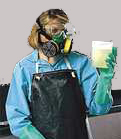
 Sculptured carpet
is a design of carpeting that is characterized by a mixture of high and low
pile fibers arranged according to a specific pattern. The appeal of this type
of carpet is in the visual presentation. Sculptured carpets can be an effective
means of adding interest to a room by providing a layered effect to the floor
covering. It is considered to be an excellent means of increasing the visual
interest of the floor covering without the use of different colors to create a
pattern.
Sculptured carpet
is a design of carpeting that is characterized by a mixture of high and low
pile fibers arranged according to a specific pattern. The appeal of this type
of carpet is in the visual presentation. Sculptured carpets can be an effective
means of adding interest to a room by providing a layered effect to the floor
covering. It is considered to be an excellent means of increasing the visual
interest of the floor covering without the use of different colors to create a
pattern.However, a concern with sculpted carpets over non sculpted carpets is the wear tendency in high use areas of the home. Because of the high/low aspect of this carpet, wear patterns tend to become more prevalent in high use areas. This is due to the walking and dragging of feet on the carpet which impacts the less supported taller fibers. Therefore, avoiding the use of this type carpet in high traffic areas should be considered. Examples of high traffic areas are dens, TV or play rooms, stairs and halls. Also, once the carpet is installed, regular vacuuming and periodic professional cleaning are important. By doing this, you will increase the longevity and maintain the beauty of this type of carpet.










